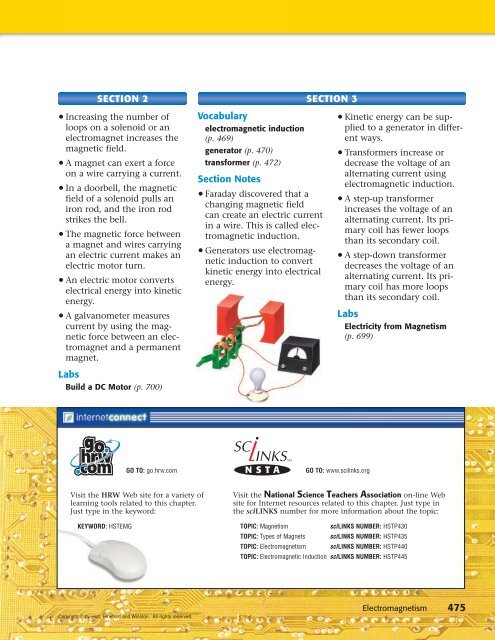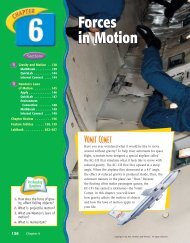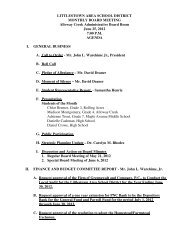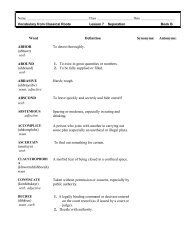Electromagnetism Electromagnetism
Electromagnetism Electromagnetism
Electromagnetism Electromagnetism
Create successful ePaper yourself
Turn your PDF publications into a flip-book with our unique Google optimized e-Paper software.
SECTION 2<br />
• Increasing the number of<br />
loops on a solenoid or an<br />
electromagnet increases the<br />
magnetic field.<br />
• A magnet can exert a force<br />
on a wire carrying a current.<br />
• In a doorbell, the magnetic<br />
field of a solenoid pulls an<br />
iron rod, and the iron rod<br />
strikes the bell.<br />
• The magnetic force between<br />
a magnet and wires carrying<br />
an electric current makes an<br />
electric motor turn.<br />
• An electric motor converts<br />
electrical energy into kinetic<br />
energy.<br />
• A galvanometer measures<br />
current by using the magnetic<br />
force between an electromagnet<br />
and a permanent<br />
magnet.<br />
Labs<br />
Build a DC Motor (p. 700)<br />
GO TO: go.hrw.com GO TO: www.scilinks.org<br />
Visit the HRW Web site for a variety of<br />
learning tools related to this chapter.<br />
Just type in the keyword:<br />
KEYWORD: HSTEMG<br />
Copyright © by Holt, Rinehart and Winston. All rights reserved.<br />
Vocabulary<br />
electromagnetic induction<br />
(p. 469)<br />
generator (p. 470)<br />
transformer (p. 472)<br />
Section Notes<br />
• Faraday discovered that a<br />
changing magnetic field<br />
can create an electric current<br />
in a wire. This is called electromagnetic<br />
induction.<br />
• Generators use electromagnetic<br />
induction to convert<br />
kinetic energy into electrical<br />
energy.<br />
SECTION 3<br />
• Kinetic energy can be supplied<br />
to a generator in different<br />
ways.<br />
• Transformers increase or<br />
decrease the voltage of an<br />
alternating current using<br />
electromagnetic induction.<br />
• A step-up transformer<br />
increases the voltage of an<br />
alternating current. Its primary<br />
coil has fewer loops<br />
than its secondary coil.<br />
• A step-down transformer<br />
decreases the voltage of an<br />
alternating current. Its primary<br />
coil has more loops<br />
than its secondary coil.<br />
Labs<br />
Electricity from Magnetism<br />
(p. 699)<br />
Visit the National Science Teachers Association on-line Web<br />
site for Internet resources related to this chapter. Just type in<br />
the sciLINKS number for more information about the topic:<br />
TOPIC: Magnetism sciLINKS NUMBER: HSTP430<br />
TOPIC: Types of Magnets sciLINKS NUMBER: HSTP435<br />
TOPIC: <strong>Electromagnetism</strong> sciLINKS NUMBER: HSTP440<br />
TOPIC: Electromagnetic Induction sciLINKS NUMBER: HSTP445<br />
<strong>Electromagnetism</strong><br />
475





